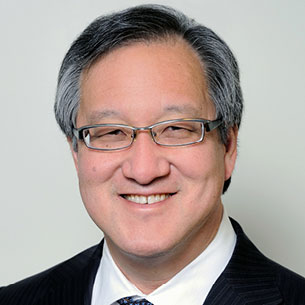It’s said that a camel was the result when a committee got together to design a horse. Over the next two months, the Institute of Medicine and the Office of the National Coordinator for HIT (Health Information Technology) will convene 100 experts to debate and design what a national HIT infrastructure should look like, including the rules of engagement needed to support the ambitious goals of health care reform. Rather than taking on health care reform piecemeal, this will be an effort to take on all the different issues that individually seem unsolvable. Because the thorny and contentious issues are often closely intertwined, a global approach appears more likely to obtain a measure of success.
Participants represented a diversity of perspectives and included patient groups such as the Armstrong Foundation; federal agencies such as FDA and CMS; standard-setting organizations such as NQF and CDISC; nonprofit public policy bodies such as the Brookings Institute, Rhode Island Quality Institute, and California Health Care Foundation; HIT-related organizations such as AMIA, Regenstrief Institute, and Health 2.0; and a variety of academic institutions and large medical groups. At the first session, held July 27-28, the tasks were divided into the following areas:
- Technical Infrastructure: Interoperability of data and knowledge creation through standards, grids, clouds, and distributed data networks
- Public engagement and Population Health: Cost transparency, personal health records, chronic disease management, and disparities in patient access to electronic information
- Weaving a trust fabric: Privacy, HIPAA, and system security
- Governance and Stewardship: Public acceptance, trust, and oversight
- International perspectives on HIT
- A Futurist’s view
My first reaction as an oncologist being exposed to this remarkable display of the complexity of health care reform was akin to “we’re not in Kansas anymore.” My second reaction was that those of us who care for cancer patients will need to reexamine, rethink, and refresh all that we do, so that we retain a relevant voice in health care reform. We can accomplish that by turning outwards to recognize the legitimate concerns and goals of all others involved in healthcare.
We will succeed if we are smart enough to position ourselves as a model for how specialty care can be a positive force for change and innovation. And perhaps most difficult, my fellow wizards, we will need to change our thinking so that we are less enamored of technical measures of quality and focus more on measures that patients can relate to. When I recently asked our breast surgeons for data elements they were interested in, they suggested mm of surgical margins, understandably important to the surgeon, but of uncertain relationship to ultimate patient outcomes. When I think about what my patients want to know, more likely, it is when they will be able to return to work after chemotherapy. The sad fact is that while I have some sense of that answer, I don’t collect that data and without that I don’t have a handle on how I might improve that outcome.


Comments
Alok A. Khorana, MD
Aug, 21 2010 2:04 PM
You make an excellent point about precisely which measures to focus on when improving quality of healthcare. Despite major improvements in technology and software, the truth is that current software programs are woefully inadequate in picking up on what really encompasses the physician-patient relationship. Consciously or subconsciously, we all realize this and therefore have focused our quality improvement efforts on what is measurable as opposed to what is important. It is easy to measure the number of lymph nodes harvested, or the surgical margins as you point out. It is difficult to measure empathy in an individual physician or patient-centeredness in an institution. I have alluded to some of these issues in a recent article in the JCO entitled "The Physician as Typist". I would like to point out a truly heartfelt plea made for precisely the type of health outcomes you reference in a recent piece in the NEJM by Dr. Ofri. (The piece is at http://www.nejm.org/doi/full/10.1056/NEJMp1006298).
As Dr. Ofri points out "I've always wanted to ask these analysts how they choose a physician for their sick child or ailing parent. Do they go online and look up doctors' glycated hemoglobin stats? Do they consult a magazine's Best Doctor listing? Or do they ask friends and family to recommend a doctor they trust? That trust relies on a host of variables — experience, judgment, thoughtfulness, ethics, intelligence, diligence, compassion, perspective — that are entirely lost in current quality measures. These difficult-to-measure traits generally turn out to be the critical components in patient care."
Alok Khorana
George W. Sledge, MD, FASCO
Aug, 23 2010 5:38 PM
For an interesting additional take on what a national HIT system might mean in terms of improving health care, take a look at Abernathy et al's "Rapid-Learning System for Cancer Care" in the JCO, which describes so-called "rapid-learning health care" in which routinely collected real-time data becomes part of an iterative process driving scientific discovery. As per the comments above, the issues are complex and not without hazard for how we do both quality improvement and scientific research. An important question facing us is whether a million anecdotes, when compiled electronically, represent real signals or just a large amount of noise? Because cancer is incredibly complex (hundreds of diseases, thousands of disease scenarios encompassing the natural history of those diseases), we can never have Level 1 evidence on which to base all of our decisions. When do we need Phase III trial data in an era where every patient's experience has the potential to provide information?
We are fortunate indeed in being represented by Peter Yu at the national level. Peter is well-versed in both the issues facing the average community practitioner and in the complexities of health information technology.